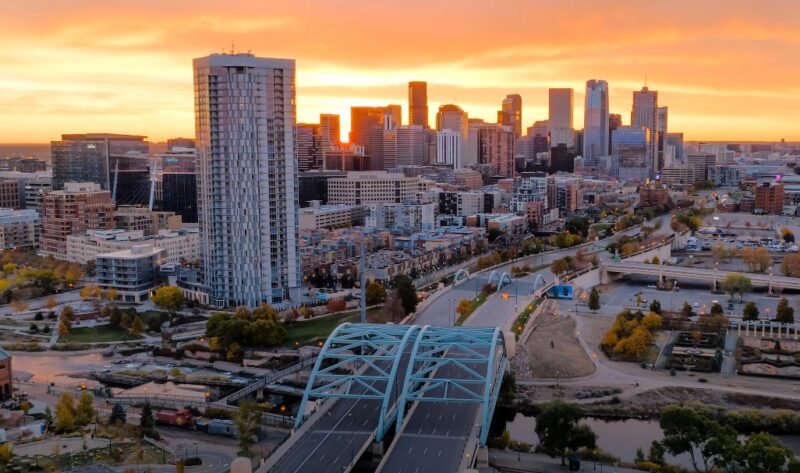Denver, Colorado, proudly carries the nickname “The Mile High City,” which is a direct reference to its elevation, precisely one mile (5,280 feet) above sea level. However, this elevation is just one of many fascinating aspects of Denver. Here are seven interesting facts that contribute to Denver’s unique identity, explored in detail.
1. The Exact Elevation
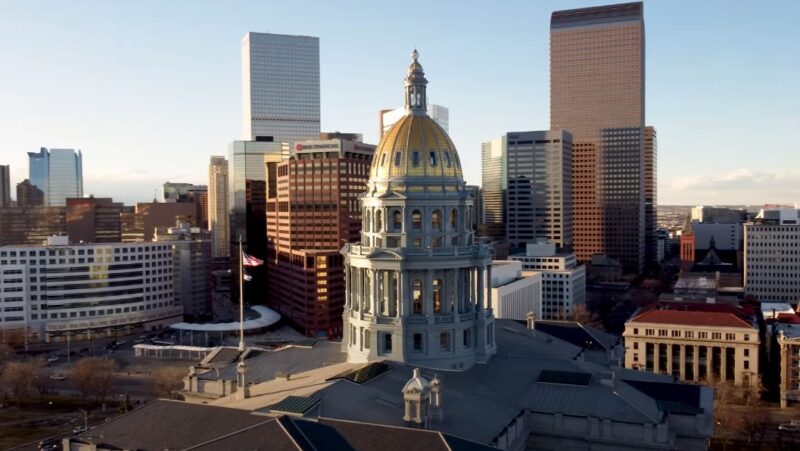
Denver’s title of “Mile High City” is not just a casual nickname; it is backed by precise measurement. The Colorado State Capitol building features a marker on its 13th step, which denotes the exact point where the elevation reaches one mile above sea level. This marker has become a popular spot for both tourists and locals.
The Capitol building itself is a historic landmark, completed in 1908 and designed to symbolize the prosperity and growth of Colorado. The decision to place an elevation marker was both practical and symbolic, signifying Denver’s unique geographical status.
Tourists visiting the Capitol often take photos at the 13th step, making it a must-visit location in Denver. Many people feel a sense of accomplishment standing at this point, knowing they are exactly one mile above sea level. This marker also serves as an educational tool, providing visitors with a tangible connection to Denver’s elevation.
2. Historical Significance
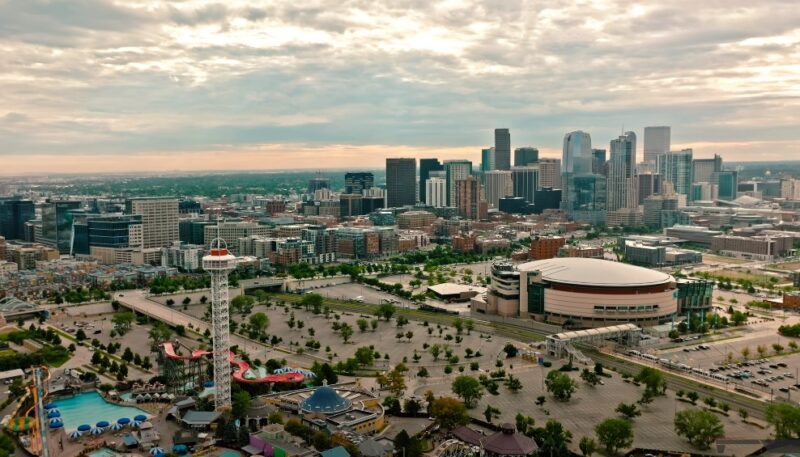
Denver was founded in November 1858 as a mining town during the Pike’s Peak Gold Rush. Its high altitude played a crucial role in its early development, providing strategic advantages for trade and transportation. The city quickly became a central hub for the region, leading to its incorporation in 1861.
Pike’s Peak Gold Rush
The Gold Rush brought thousands of prospectors to the area, hoping to strike it rich. Denver’s location at a high altitude made it a natural stopping point for miners heading into the mountains. The city’s elevation also contributed to its reputation as a place of opportunity and adventure.
Denver’s growth was rapid, fueled by the influx of settlers and the discovery of gold. The city’s altitude meant that it was well-positioned to become a transportation hub, with railroads and highways converging in Denver. This growth continued through the 19th and 20th centuries, transforming Denver into the bustling metropolis it is today.
3. Altitude and Athletic Performance
Athletes often find it challenging to compete in Denver due to its high altitude. The thinner air means there is less oxygen available, which can affect endurance and performance. However, this also provides a unique advantage for home teams, as they are acclimated to the conditions.
Impact on Visiting Teams
Visiting sports teams frequently struggle with Denver’s altitude. The reduced oxygen levels can lead to quicker fatigue and decreased performance. Many teams arrive in Denver a few days early to acclimate, but the home advantage remains significant.
High-Altitude Training
Many athletes use Denver’s altitude for high-altitude training, which has been shown to improve performance. Training in low-oxygen environments forces the body to adapt, increasing red blood cell production and improving overall endurance. Denver’s numerous training facilities and natural landscapes make it an ideal location for this type of training.
4. Booming Craft Beer Scene

Denver’s high altitude and dry climate contribute to its thriving craft beer industry. The city is home to numerous breweries and hosts the Great American Beer Festival, one of the largest beer festivals in the world. The altitude affects the brewing process, leading to unique flavors and characteristics in the beer produced here. Also, Denver offers lots of reputable coffee places.
The Brewing Process
At high altitudes, the boiling point of water is lower, which affects the brewing process. Brewers in Denver have adapted their techniques to account for these differences, resulting in beers with distinct flavors. The city’s dry climate also influences the fermentation process, adding another layer of complexity.
The Great American Beer Festival
Held annually in Denver, the Great American Beer Festival attracts brewers and beer enthusiasts from around the world. The festival showcases thousands of different beers, many of which are brewed at high altitudes. This event has helped solidify Denver’s reputation as a premier destination for craft beer lovers.
5. Environmental Challenges
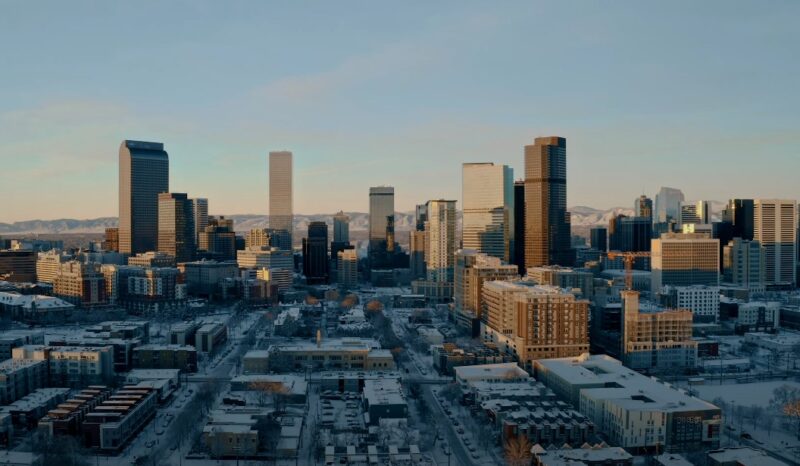
Living at a high altitude comes with its own set of environmental challenges. Denver residents often face issues like altitude sickness, which can cause headaches, nausea, and fatigue. The city’s climate is also affected, with milder winters and hotter summers compared to lower elevations. These factors influence daily life and the lifestyle of Denver’s inhabitants.
Altitude Sickness
Altitude sickness is a common issue for newcomers and visitors to Denver. Symptoms can include headaches, dizziness, and shortness of breath. Acclimatization is key, and it often takes a few days for the body to adjust to the thinner air.
Climate and Weather
Denver’s high altitude also affects its climate. The city experiences more sunshine and less humidity than many other parts of the country. This results in milder winters, with less snowfall, and hotter summers. Residents and visitors must adapt to these conditions, which can impact everything from outdoor activities to home heating and cooling needs.
6. Architectural Marvels
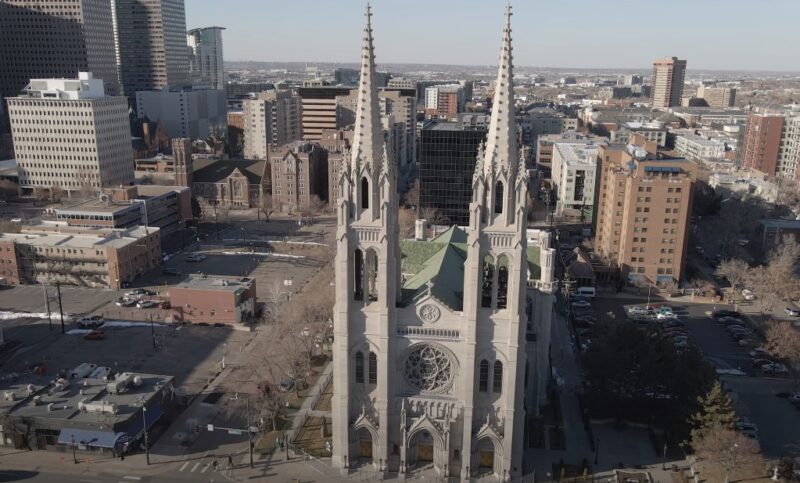
Denver’s unique elevation has influenced its architecture and urban planning. Buildings are designed to withstand the specific weather conditions and temperature fluctuations that come with high altitude. The cityscape features a mix of modern and historic architecture, reflecting its rich history and rapid development.
Designing for Altitude
Architects in Denver must consider the city’s high altitude when designing buildings. This includes accounting for lower air pressure and greater exposure to the sun. Materials used in construction often need to be more resilient to withstand the unique environmental conditions.
Historic and Modern Architecture
Denver’s architecture is a blend of historic and modern styles. The city boasts a number of historic buildings from its early days, including the Union Station and the Brown Palace Hotel. At the same time, modern skyscrapers and innovative designs reflect Denver’s growth and development as a major urban center.
7. Tourism and Outdoor Activities

The Mile High City is a gateway to the Rocky Mountains, offering a plethora of outdoor activities for adventure enthusiasts. Hiking, skiing, and mountain biking are popular pastimes, drawing tourists from all over the world. Denver’s elevation provides stunning panoramic views, making it a favorite destination for nature lovers.
Gateway to the Rockies
Denver’s proximity to the Rocky Mountains makes it an ideal base for exploring the great outdoors. The city’s high altitude means that many outdoor activities, such as hiking and skiing, are easily accessible. Tourists flock to Denver year-round to take advantage of these recreational opportunities.
Outdoor Enthusiast’s Paradise
From urban parks to mountain trails, Denver offers a wide range of outdoor activities. The city’s extensive park system includes over 200 parks, providing plenty of space for outdoor recreation. In the nearby mountains, visitors can enjoy activities like rock climbing, white-water rafting, and wildlife watching.
Conclusion
Denver’s designation as the Mile High City is more than just a reference to its altitude. It encapsulates the city’s history, culture, and unique challenges and advantages. From its founding during the Gold Rush to its status as a modern metropolis, Denver’s elevation has shaped its identity in profound ways. Whether you’re a resident or a visitor, the Mile High City offers a unique blend of urban sophistication and natural beauty that is truly one of a kind.

